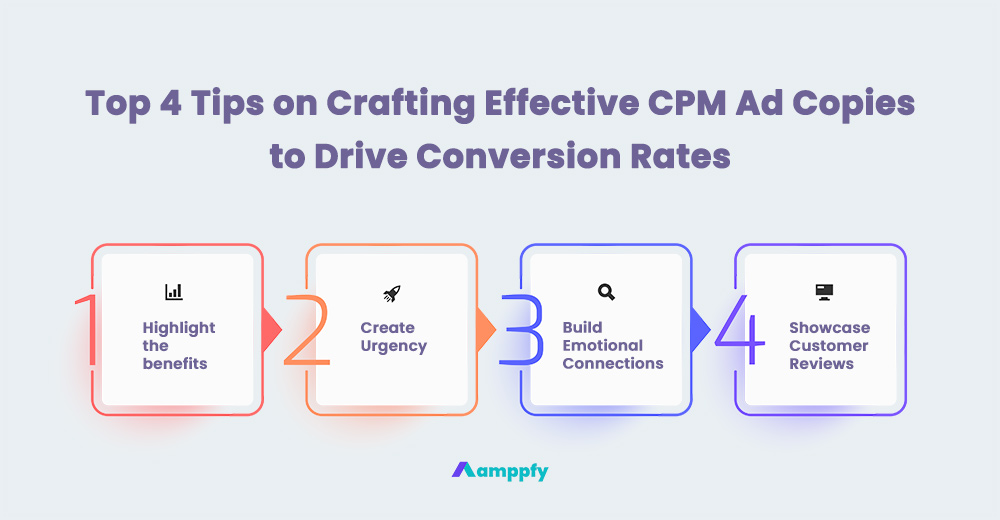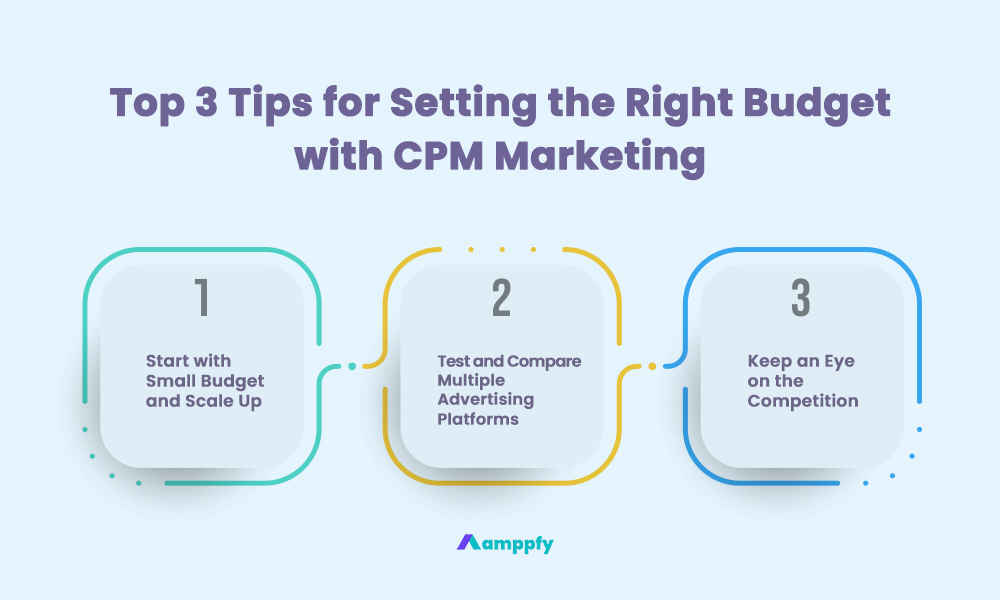Share via:

-
Save
Understanding CPM Marketing – Cost Per Thousand Impressions
CPM, or cost-per-thousand impressions, is a popular metric used in search engine marketing to measure the cost of placing ads on various online platforms. It is an effective SEM strategy to achieve successful ad campaign results and helps advertisers optimize marketing budget allocation for maximum target audience reach.
What is CPM Marketing?
The “Impression” in cost-per-thousand impressions stands for the number of times visitors see an advertisement, regardless of the ad being clicked on by visitors. The industry standard for paid impressions is measured in increments of every one thousand views. Hence, the “M” in CPM is used to represent 1000.
Advantages of CPM Marketing
One of the benefits of using CPM as a metric is that it allows advertisers to compare the costs of different advertising platforms against each other. For example, when placing ads on Facebook and Instagram, you can use CPM to determine which platform will maximize return for your marketing dollars. Another benefit of CPM is that it provides a clear idea of how much advertisers will pay for an ad to be shown a thousand times. This helps marketers make more informed decisions about budget allocation while better understanding how far the marketing budget can stretch.Try the Free Google Ads Generator for Ad Headlines
- 100% Free
- No Account Required
- Available 24/7
Disadvantages of CPM Marketing
CPM is a useful metric for measuring the potential reach of an ad, as it provides insight into how many people the ad could potentially be seen by. CPM is commonly used in SEM text ads, display, video, and social media advertising, but it may not be the best metric for every campaign.
For example, if the goal is to drive conversions rather than simply increase brand awareness, consider using a metric like pay per click (PPC) or cost per acquisition (CPA) instead.
When using CPM to measure the cost of an ad campaign, it is important to remember that the metric only accounts for impressions, not clicks or conversions. This means that while a high CPM may indicate a wider reach, it does not necessarily guarantee a high return on investment for a campaign.
Optimize the SEM Bidding Strategy with CPM Marketing
When optimizing SEM bidding strategy with CPM, keep in mind the following tips to help you set realistic expectations on campaign results while maximizing the effectiveness of the CPM marketing campaign.
Top 4 Tips on Optimizing SEM Bidding Strategy with CPM Marketing
- Set an achievable targeted impression goal: Before starting an SEM campaign, it is vital to set a realistic impression goal to determine how much you should be bidding and how long to run the campaign.
- Choose the right bidding type: There are several bidding types, including eCPC, vCPM, CPM, and CPA. Each has its advantages and disadvantages. Choosing the one that aligns with the campaign objectives and goals is crucial.
- Run A/B testing of different ad creatives: To maximize the effectiveness of the SEM campaign, test different ad creatives to determine which ones resonate best with the target audience and generate the most clicks or impressions.
- Use targeting options based on the audience persona and behavior: To ensure that your ad is seen by the right people, choose targeting options based on the audience persona and behavior. This includes targeting by demographics, interests, and behaviors.
Try the Free Google Ads Generator for Ad Descriptions
- 100% Free
- No Account Required
- Available 24/7
Explore Different SEM Bidding Strategies for CPA Marketing
While CPM marketing is a powerful bidding strategy, it’s not the only one available. Let’s explore additional SEM bidding strategies to use in conjunction with CPM marketing.Cost-Per-Click (CPC)
CPC is often used interchangeably with PPC or pay-per-click (SEM-R2D4). CPC, or the cost-per-click model, is another one of the most common bidding strategies in which the advertiser pays for every click on the ad. This model is best for businesses looking to drive traffic to their website or increase brand awareness.Cost-Per-View (CPV)
CPV is a pay-per-view model that applies to video ads. CPV is when advertisers pay for every view of the video ad. This model is best for businesses looking to drive video views or promote their products and services via marketing channels such as YouTube.Analyze the Target Audience by Utilizing CPM Marketing for More Targeted Campaigns
CPM advertising allows advertisers to segment the target audience. Leverage Google Ads platform data to understand the target audience and adjust the ad targeting and bidding accordingly. Segmenting the target audience creates more specific and relevant ads to optimize campaign results and maximize ROI.
For example, if you are selling sports equipment, target audiences who have expressed an interest in sports or fitness. This ensures that the ads are seen by relevant audience who are more likely to engage with your product or service offering, increasing the chances of a click-through and conversion.
Relevance is Key to Making Effective Use of the CPM Marketing Budget
Creating tailored and relevant ad messaging (SEM-R2D2) for specific target audience segments, such as visitors with specific interests, ages, or locations, increases the probability of potential customers clicking through on the ad and seeing the campaign offer.
For example, if you are selling a product that is popular among a specific age group, customize the ad copy to specifically target audience of that defined age group.
Craft Effective Ad Copy for CPM Marketing
Compelling ad copies must be concise, clear, and captivating to entice clicks and improve campaign performance. Here are the top tips for crafting ad copies that drive conversion rates.
Top 4 Tips on Crafting Effective CPM Ad Copies to Drive Conversion Rates

-
Save
- Highlight the benefits of the product or service
- Create urgency with time-limited offers
- Build emotional connections and use persuasive language
- Showcase customer reviews and positive social proof
Track Performance and Measure ROI with CPM Marketing
Tracking the performance, measuring the ROI of the CPM campaigns, and adjusting the campaign strategies accordingly are essential to the success of SEM marketing. The following CPM marketing metrics should be tracked on a frequent basis:- Impressions
- Clicks
- Conversions
- CPM cost
Use Google Analytics, Google Ads, or Facebook Ads Manager to track campaign performance using conversions, website traffic, and revenue metrics. By consistently monitoring and adjusting the bidding strategy, the chances of achieving a positive ROI significantly increase. Over time, you can better gauge which specific ad creatives and targeting options perform the best and leverage this data to optimize future ad campaigns.
Set the Right Budget with CPM Marketing
Setting the right SEM budget can be challenging with CPM marketing. The marketing budget advertisers allocate to CPM campaigns depends on several factors, such as the size of the target audience group and the level of competition in the industry. Here are a few useful tips to follow.
Top 3 Tips for Setting the Right Budget with CPM Marketing

-
Save
- Start with small budget and scale up as you see successful performance and positive engagement
- Test and compare multiple advertising platforms and ad creatives to find the most cost-effective combination
- Keep an eye on the competition and adjust the ad spending to align with the bidding behavior
Adjust SEM Bidding Strategy for Maximum Performance in CPM Marketing
The bidding strategy for CPM campaigns should be constantly monitored and realigned based on performance metrics and insights from your audience analysis. Consistent optimization and improvement of the bidding strategy is the key to achieving better campaign performance. Here are four tips to follow.Top 4 Tips on Adjusting and Realigning SEM Bidding Strategy
- Lower or pause the bids for underperforming ads
- Increase the bids for top-performing ad groups
- Adjust bids depending on the level of competition and the time of day
- Keep testing and experimenting with ad creatives and targeting options
Find the Right Balance between Cost and Reach with CPM Marketing
When it comes to CPM campaigns, finding the sweet spot between cost and reach can be tricky. The goal is to get the most reach for the least marketing dollars spent, but it is not always possible, especially in competitive markets. Try the following tips.
Top 3 Tips on Finding the Right Balance Between CPM Marketing Cost and Reach
- Adjust the ad targeting options to reduce irrelevant impressions and increase the chance of engagement
- Keep refining the target audience segment based on their behavior and interests to increase relevancy
- Test different bidding types – CPM, CPA, eCPC, and vCPM – to understand which one is the most suitable for your campaign goals and marketing budget
Strategies for Growing Brand Awareness with CPM Marketing
CPM marketing is also an effective method to boost brand awareness while broadening the reach of the potential target market. Here are four strategies for using CPM to achieve your brand awareness goals.
Top 4 Strategies for Leveraging CPM Marketing to Increase Brand Awareness
- Use video ads to create compelling brand stories that capture attention and entice engagement
- Keep your branding consistent on ad creatives across all advertising platforms
- Run retargeting campaigns to remind the audience of the brand, products, or services
- Focus on building meaningful emotional connections with your audience to establish brand loyalty
Continue the Learning Journey with Amppfy
Amppfy’s digital marketing resource library is beginner-friendly, and zero technical or marketing experience is required to get started. Learn how to create a practical, actionable, and programmatic digital marketing playbook for any business website, e-commerce store, or content platform. Leverage effective SEO, SEM, and social media strategies to boost brand authority, increase online visibility, and generate quality demand.
Follow us on LinkedIn, Facebook, Instagram, and YouTube to stay updated on the latest marketing news, strategies, and free content.
Get Started with Free Generative AI Marketing Tools
- 100% Free
- No Account Required
- Available 24/7
Share via:





